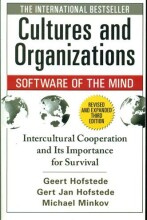Summary: Microeconomics And Behaviour | 9780077174088 | Robert H Frank, et al
- This + 400k other summaries
- A unique study and practice tool
- Never study anything twice again
- Get the grades you hope for
- 100% sure, 100% understanding
Read the summary and the most important questions on Microeconomics and Behaviour | 9780077174088 | Robert H. Frank; Edward Cartwright
-
1 Consumer Behaviour I
This is a preview. There are 12 more flashcards available for chapter 1
Show more cards here -
Key properties of an indifference curve
- There can be only one indifference curve for each value of U
- All the bundles above the indifference curve are preferred to those that lie below
- indifference curves are downwards sloping (more is better)
- There can be only one indifference curve for each value of U
-
1.1 The Cost-Benefit Approach to Decisions
This is a preview. There are 1 more flashcards available for chapter 1.1
Show more cards here -
The reservation price of an activity x is:
The price at which a person would be indifferent between doing x and not doing x. -
1.3 Common Pitfalls in Decision Making ( - )
This is a preview. There are 1 more flashcards available for chapter 1.3
Show more cards here -
What are the four most common pitfalls in decision making?
Pitfall 1. Ignoring opportunity costs
Pitfall 2. Failing to ignore sunk costs
Pitfall 3. Measuring costs and benefits as proportions rather than absolute monetary amounts
Pitfall 4. Failure to understand the average-marginal distinction. -
What is the opportunity cost of an activity?
The value of all that must be sacrificed in order to do the activity (therefore you should be able to recognize the most valuable alternative that is sacrificed by the pursuit of a given activity. -
What are sunk costs?
Costs that are beyond recovery at the time a decision is made and so should be ignored. -
What are marginal costs/marginal benefits?
The increase in total cost/benefit that results from carrying out one additional unit of an activity. -
1.5 Would Parents Want Their Daughter or Son to Marry Homo Economicus?
-
The so-called Homo economicus only cares about:
Personal costs and benefits -
1.6 Positive Questions and Normative Questions
This is a preview. There are 1 more flashcards available for chapter 1.6
Show more cards here -
What is a normative question?
A question about what policies or institutional arrangements lead to the best outcomes. Does not have a definite answer. -
2 Consumer Behaviour II
This is a preview. There are 3 more flashcards available for chapter 2
Show more cards here -
2.1 Supply and Demand Curves
This is a preview. There are 5 more flashcards available for chapter 2.1
Show more cards here -
The horizontal interpretation of a demand/supply curve means:
We start with the price on the vertical axis and read thecorresponding quantity demanded/supplied on thehorizontal axis. -
The inverse demand/supplu curve (vertical interpretation) of a products tells us:
The price at which buyers/sellers would demand specific quantities of the product.
- Higher grades + faster learning
- Never study anything twice
- 100% sure, 100% understanding
Topics related to Summary: Microeconomics And Behaviour
-
Producer Behaviour - The opportunity set or Budget Constraint
-
Producer Behaviour - Consumer preferences - Indifference curves
-
Producer Behaviour - The best affordable bundle
-
Individual and market demand - The income and substitution effects of a price change - Giffen goods
-
Individual and market demand - Price elasticity of demand
-
Individual and market demand - Income elasticity of demand
-
Applications of rational choice and demand theories
-
Choice under uncertainty and the economics of information
-
Production - Production in the short run - Total, marginal and average products
-
Production - Production in the long run
-
Perfect competition - The short-run condition for profit maximization
-
Monopoly - The profit-maximizing monopolist
-
Capital - The intertemporal choice model

































